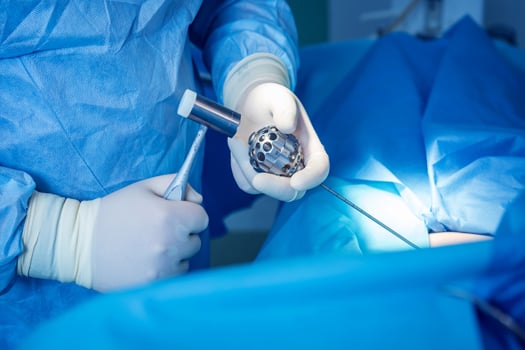
A discectomy is a fairly common procedure if you have pain caused by a herniated disc that is not responding well to other treatments. As is the case with any type of operation, some degree of postoperative pain is to be expected after spinal disc surgery, and this may include leg pain that is usually considered normal. This article explains why this may happen and offers tips on what to do if this is what you experience after a discectomy.
Post-Surgery Nerve Healing
Just because disc material is no longer compressing a nerve does not mean the affected nerve is automatically healed, especially if the nerve was irritated for several months or more before surgery. In this instance, there may be lingering pain until the nerve fully heals.
With leg pain, the sciatic nerve is often involved. This is the largest single nerve in the body, and several nerves branch off from it and continue down into the legs. In this instance, the affected parts of the sciatic nerve still need time to fully heal and recover after surgery. For this reason, you may notice lingering leg pain, but it may not be as intense as what you felt before the discectomy.
Post-Surgery Inflammation
Shortly after a discectomy or a less invasive microdiscectomy is completed, you may not immediately notice any pain until the anesthesia wears off. Once this happens, you might have some discomfort affecting at least one leg because of post-surgery tissue inflammation. This can happen because the swelling is usually within the same area where the affected nerve is located, particularly near the surgery site.
Muscle Spasms
As you begin activity again after a discectomy, you may experience muscle spasms around the affected area or in the lower back area that result in leg pain. This could also happen if you were not as active as you normally are prior to surgery because of your disc-related pain. Once you start getting active again post-surgery, an increase in activity may trigger muscle spasms.
Managing Leg Pain After a Discectomy
More often than not, leg pain after a discectomy is normal, but it should naturally subside as you continue to heal and recover. If you have issues with post-surgery leg pain following a discectomy, you may be able to manage the pain with any of the following remedies:
• Heat and/or cold therapy
• Medication*
• Physical therapy to strengthen muscles within the affected area
• Massage therapy to minimize issues with muscle spasms
*Check with your doctor first before starting any new medication to manage post-surgery leg pain.
When to Talk to Your Doctor
If you have any concerns about leg pain you are experiencing after a discectomy, talk to your doctor to find out for sure if the recovery is normal for you. Additionally, check with your doctor or surgeon if leg pain or any other post-surgery discomfort is not going away or becoming less noticeable as you recover.
Although discectomy surgery is generally a very successful procedure, a hole is left in the outer wall of the disc. Patients with a large hole in the outer ring of the disc are more than twice as likely to reherniate after surgery. A new treatment, Barricaid, which is a bone-anchored device proven to reduce reherniations, was specifically designed to close the large hole often left in the spinal disc after discectomy. In a large-scale study, 95 percent of Barricaid patients did not undergo a reoperation due to reherniation in a 2-year study timeframe. This treatment is done immediately following the discectomy—during the same operation—and does not require any additional incisions or time in the hospital.
If you have any questions about the Barricaid treatment or how to get access to Barricaid, ask your doctor or contact us at 844-288-7474.
For full benefit/risk information, please visit: https://www.barricaid.com/instructions.


Comments